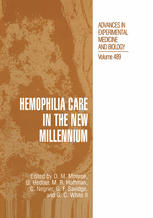

Most ebook files are in PDF format, so you can easily read them using various software such as Foxit Reader or directly on the Google Chrome browser.
Some ebook files are released by publishers in other formats such as .awz, .mobi, .epub, .fb2, etc. You may need to install specific software to read these formats on mobile/PC, such as Calibre.
Please read the tutorial at this link: https://ebookbell.com/faq
We offer FREE conversion to the popular formats you request; however, this may take some time. Therefore, right after payment, please email us, and we will try to provide the service as quickly as possible.
For some exceptional file formats or broken links (if any), please refrain from opening any disputes. Instead, email us first, and we will try to assist within a maximum of 6 hours.
EbookBell Team

4.7
106 reviewsThere should be, and in the best of cases there is, a synergy between basic research and patient care. However, this synergy is hard to develop because the techniques required to be a successful researcher are so different from the skills required to be an outstanding physician. Harold R. Roberts, M.D., of the University of North Carolina at Chapel Hill, is an example of a physician-researcher who has benefited from having his feet in both the world of patient care and the world of the laboratory: he has let clinical problems direct his basic research effort and conversely has adopted research advances in his care of patients. Dr. Roberts's long and continuing career has included many research and clinical advances. He was part of the first group to determine the amino acid sequence of the important thrombin inhibitor hirudin and part of the group that prepared the first cryoprecipitates which were the first alternative to plasma as therapy in hemophilia A. Dr. Roberts has made significant advances in understanding the protein chemistry behind hemophilia B; he was among the first researchers to identify some patients as not being completely deficient but instead as having measurable levels of protein and subsequently demonstrated that this protein was dysfunctional. This important advance led him to a classification scheme for patients into Cross Reacting Material (CRM) positive, negative, and reduced. Dr.